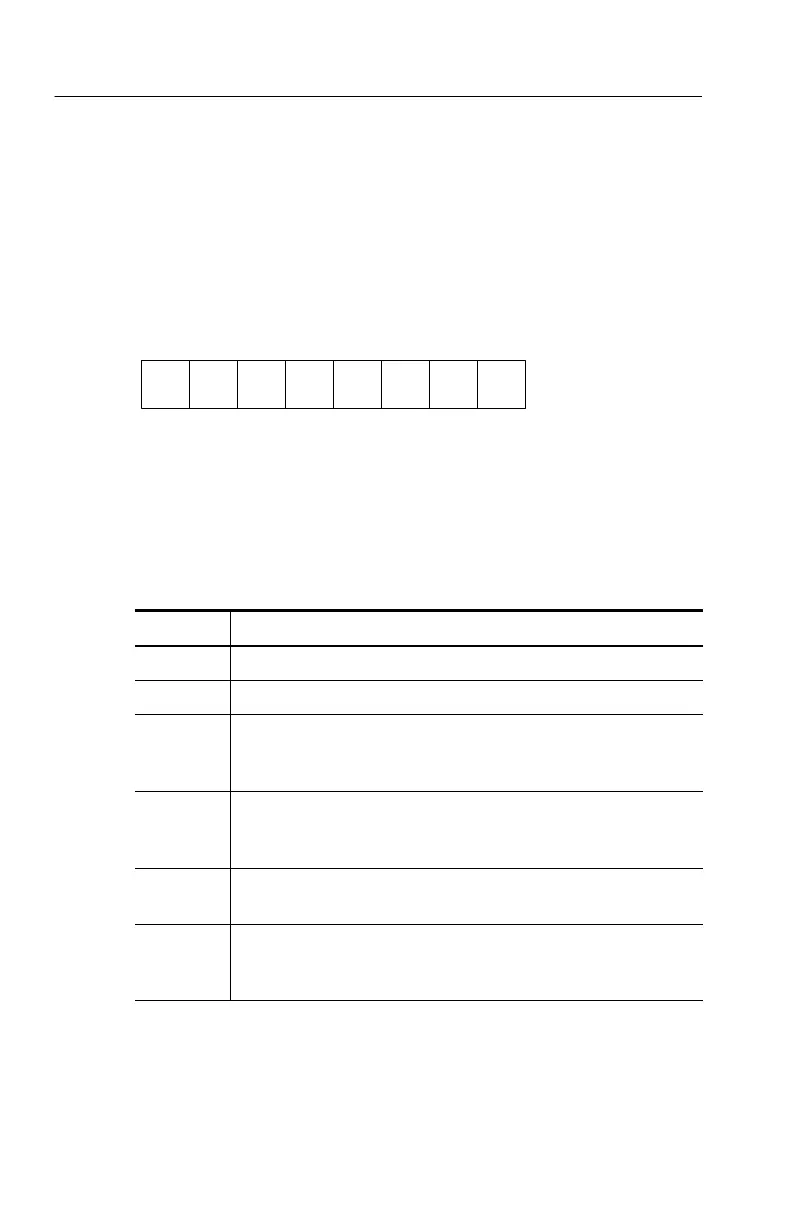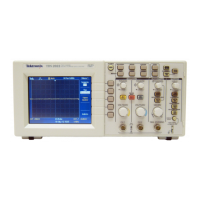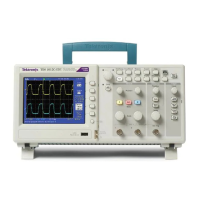Status and Events
3−2
TDS200/1000/2000 Series Oscilloscope Programmer Manual
The Standard Event Status Register (SESR). The SESR, shown in
Figure 3-1, records eight types of events that can occur within the
oscilloscope. Use *ESR? to read the SESR register. Reading the
register clears the bits of the register so that the register can
accumulate information about new events. Figure 3-1 shows SESR
bit functions.
PON URQ CME EXE DDE QYE RQC OPC
76543210
Figure 3−1: The Standard Event Status Register (SESR)
Table 3-1 lists and describes SESR bit functions.
Table 3−1: SESR bit functions
Bit Function
7 (MSB) PON (Power On). Shows that the oscilloscope was powered on.
6 URQ (User Request). Not used.
5 CME (Command Error). Shows that an error occurred while the
oscilloscope was parsing a command or query. Command error
messages are listed in Table 3−4 on page 3−18.
4 EXE (Execution Error). Shows that an error occurred while the
oscilloscope was executing a command or query. Execution error
messages are listed in Table 3−5 on page 3−18.
3 DDE (Device Error). Shows that a device error occurred. Device
error messages are listed in Table 3−6 on page 3−21.
2 QYE (Query Error). Shows that either an attempt was made to
read the Output Queue when no data was present or pending, or
that data in the Output Queue was lost.

